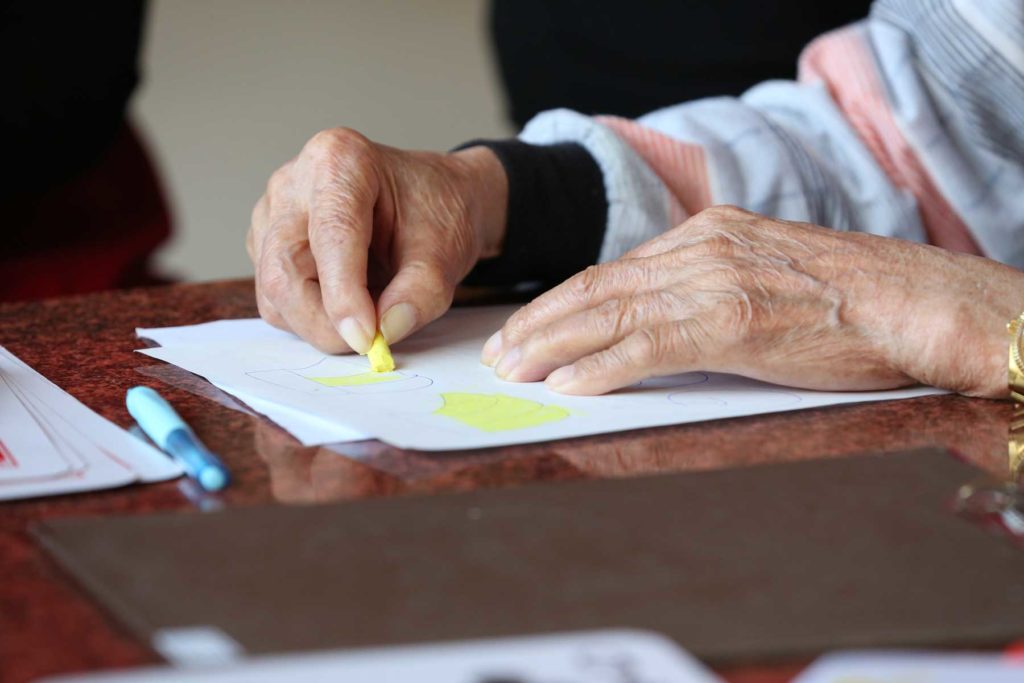Arthritis is a common, painful, and often debilitating condition that affects the joints. About 58 million people in the United States have been diagnosed with arthritis, according to the Centers for Disease Control and Prevention (CDC). This data reflects that about one in four American adults suffers from stiffness, mobility issues, and other symptoms related to arthritis.
But there are treatment plans that can help alleviate arthritis symptoms and improve mobility. Nutrition has actually become an important aspect of arthritis treatment and prevention. As a part of Arthritis Awareness Month, Valley Orthopaedic Specialists are here to shed some light on arthritis and discuss a few treatment options for patients to help ease painful and debilitating symptoms.
What Is Arthritis?
Arthritis causes tenderness and swelling in one or more of the joints. The disease usually involves inflammation and degeneration (or breakdown) of joints. This can cause pain during movement.
Joints are areas of the body where two bones meet and move. Soft connective tissue – known as cartilage – covers and cushions the ends of bones to prevent them from rubbing against each other during movement. One type of connective tissue – known as articular cartilage – helps your joints move smoothly and without friction or pain.
Some joints feature a padded pocket of fluid, known as the synovial membrane, which lubricates the area while other tissues support the joints. A ligament is an elastic band of tissue that connects bones to create joints and improve their stability, and tendons connect muscles to bones. All these components work together to help the body move properly and with ease.
While arthritis can affect almost all joints, it is most common in the:
- Hands
- Hips
- Knees
- Lower back
- Feet
There are more than 100 types of arthritis, and each affects the joints differently. The most common types include:
- Osteoarthritis. Also known as wear and tear arthritis, osteoarthritis develops when repeated stress breaks down joint cartilage. Osteoarthritis is the most common form of arthritis.
- Rheumatoid arthritis (RA). A condition in which the immune system attacks synovial membranes.
- Ankylosing spondylitis. This type of arthritis affects the spine, usually in your lower back.
- Gout. This condition causes the formation of hard uric acid crystals in your joints.
- Psoriatic arthritis. Inflammation occurs in the joints of people who have psoriasis, which is an autoimmune disorder that causes skin irritation.
- Juvenile arthritis (JA). A disorder in which the immune system attacks tissue around the joints and typically affects children ages 16 and younger.
Some types of arthritis are progressive, which means the damage to joints and the resulting pain worsens over time.
Arthritis and Other Conditions
Arthritis is similar to other conditions, such as tendonitis and bursitis, but there are some key differences between these diseases.
Arthritis vs Tendonitis
Arthritis is a condition that causes inflammation in and around a joint, whereas tendonitis causes inflammation around the tendon that connects muscle to bone.
Arthritis vs Bursitis
Arthritis causes irreparable damage to the bone, cartilage, and joints, whereas bursitis causes temporary swelling of the fluid-filled sac that lubricates joints.
Causes of Arthritis
There are a few causes of arthritis, including:
- Wear and tear of a joint from overuse
- Age
- Obesity
- Injuries
- Genetics or a family history
- Autoimmune disorders
- Muscle weakness
While physical activity can reduce your risk and symptoms of arthritis, there is a connection between arthritis and sports. Sports injuries can increase the risk of early-onset arthritis. There is also an association between arthritis and cold weather, as colder temperatures can worsen joint pain.
Treatments Options
While there is no cure for arthritis, treatment can reduce symptoms and may even slow progression. Treatment plans depend largely on the type of arthritis, its severity, specific symptoms, and the overall health of a patient.
Most orthopedic doctors in CT recommend starting with conservative, non-surgical treatments that include medications, physical therapy, and therapeutic injections.
Medication
Medications for arthritis may include anti-inflammatory drugs and pain relievers to alleviate symptoms. A healthcare provider may prescribe biologics – which target the immune system’s inflammatory response – to patients with psoriatic arthritis or rheumatoid arthritis.
Physical Therapy
Physical therapy can help improve strength, overall mobility, and range of motion. Therapists can teach patients how to adjust their daily activities to reduce symptoms.
Therapeutic Injections
Injecting cortisone shots into the affected joint can temporarily relieve pain and inflammation. Viscosupplementation, another therapeutic injection, requires the orthopaedics specialist to inject a lubricant into the joint to help it move freely.
Surgery
Surgery may be required to treat severe cases of arthritis that do not respond to conservative treatment procedures. Surgical treatment from the best orthopedic surgeons in CT at Valley Orthopaedic Specialists may involve fusing two or more bones to immobilize the joint or require joint replacement with an artificial joint.
Nutrition Plan to Help Prevent Arthritis
While there is no miracle diet that will prevent or treat arthritis, many foods fight inflammation and can improve joint pain. A healthy and well-balanced diet can also improve your health and prevent issues like obesity that cause arthritis.
What to Include in Your Arthritis Nutrition Treatment Plan
- Low-calorie foods that help you to achieve and maintain a healthy weight.
- Salmon, sardines, mackerel, and other oily fish that contain omega-3 fatty acids, which reduce inflammation.
- Oily fish, fortified milk, orange juice, and other foods containing vitamin D.
- Oranges, bell peppers, pumpkins, and other brightly-colored fruits and vegetables.
What to Avoid in Your Arthritis Nutrition Treatment Plan
- High-calorie foods that may lead to weight gain.
- Red meats, full-fat dairy foods, butter, poultry skin, and other foods that contain trans-fat and saturated fat.
FAQ about Arthritis & Orthopedic Doctors in CT
What Can an Orthopaedic Doctor Do for Rheumatoid Arthritis?
An orthopaedic doctor can prescribe and administer medications, refer patients to physical therapy, or suggest surgery to treat more severe cases of RA.
Does an Orthopaedic Doctor Work with Arthritis Patients?
Our orthopaedic doctors specialize in conditions that affect the musculoskeletal system. They have undergone expert training and experience working with arthritis patients.
Are Orthopaedic Doctors Familiar with Psoriatic Arthritis?
Yes! While psoriatic arthritis affects the skin, it can also affect the joints. Orthopaedic doctors are very familiar with the condition as well as how to properly treat it.
If you are suffering from arthritis, contact the Connecticut orthopedics specialists at Valley Orthopaedic Specialists for more information on what other steps we can take together to manage your symptoms. We have specialized orthopaedic doctors whom arthritis patients trust to treat mild to severe arthritis. Our arthritis consultants are here to help!

